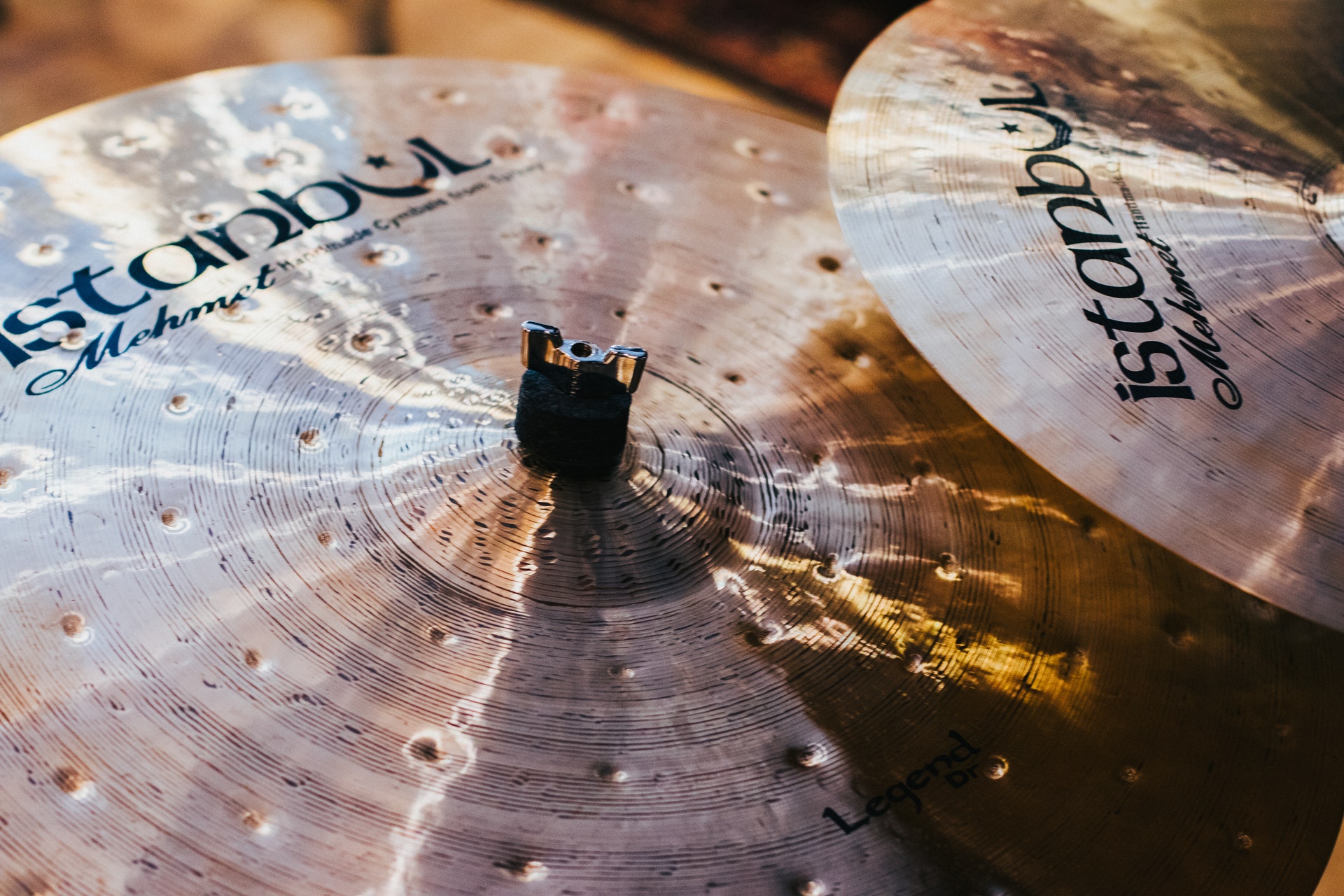First, let’s break down the essentials.
Crash cymbals are your go-to for accentuating those dramatic moments in a song. On the flip side, ride cymbals maintain the rhythm, keeping the beat steady and your audience nodding along.
So what’s my point?
By the end of this article, you’ll have a clear understanding of when to use each cymbal type.
Crash VS Ride Cymbals
| Feature | Crash Cymbals | Ride Cymbals |
|---|---|---|
| Primary Use | For accents and emphatic hits | For steady rhythms and patterns |
| Sound | Explosive, bright, and fast-decaying | Clear, defined, with longer sustain |
| Size | Generally smaller (14"-18") | Generally larger (20"-24") |
| Thickness | Thinner, contributing to a quicker response | Thicker, providing a clearer ping and longer sustain |
| Playing Technique | Often struck with the edge for maximum volume | Played on the top with the tip of the stick for a defined sound |
| Tonal Quality | Brighter with a higher pitch | Darker with a lower pitch |
| Versatility | Used for dramatic effects in various musical passages | Used as a constant rhythmical element throughout a piece |
Primary Use
A ride cymbal is a type of cymbal used in drum kits to maintain a steady rhythmic pattern throughout a piece of music. It is typically larger than other cymbals and produces a sustained, shimmering sound that anchors the rhythm section.
A crash cymbal is a type of cymbal that produces a loud, sharp sound used to accentuate certain points in a musical composition, such as the climax of a song or the transition between sections. It is typically struck with a strong force to create a pronounced effect.

Sound Characteristics
Ride cymbals produce a clear, sustained tone, making them suitable for keeping a consistent rhythm in a song. Their sound includes more subtle nuances compared to crash cymbals.
Crash cymbals are known for their loud, explosive sound that quickly fades away. This characteristic makes them perfect for emphasizing dramatic moments within a musical piece.
Physical Attributes
Size:
Ride Cymbals: Generally larger, with diameters from 20 to 24 inches, to produce a longer, more sustained sound.
Crash Cymbals: Typically smaller, ranging from 14 to 18 inches in diameter, which contributes to their sharp and explosive sound.
Thickness:
Ride Cymbals: Thicker, which enhances their ability to produce a clearer, more sustained tone, suitable for maintaining steady rhythms.
Crash Cymbals: Thinner, allowing them to respond and decay quickly for immediate, dramatic accents.
Playing Technique
Ride Cymbals: Played by striking the top surface or the bell directly with the tip of the drumstick. This method produces a consistent, defined beat that serves as the rhythmic foundation of a piece.
Crash Cymbals: Typically struck on the edge with a sideways, glancing blow. This technique maximizes the cymbal’s explosive and resonant sound, making it ideal for accents and dramatic effects in music.
Tonal Quality and Pitch
Ride Cymbals: Characterized by a darker, lower pitch, ride cymbals create a more subtle background rhythm that blends seamlessly with various musical styles, supporting the overall harmony.
Crash Cymbals: Known for their bright tone and higher pitch, crash cymbals excel at cutting through the mix of other instruments, making them stand out during key moments in a song.
Versatility and Application
Ride Cymbals: Serve as the backbone for creating a steady rhythmic pattern, playing a crucial role across a wide array of musical genres, including jazz, rock, and many others. Their consistent sound is fundamental in maintaining the tempo and rhythm of a piece, making them indispensable in most drumming setups.
Crash Cymbals: Primarily utilized to emphasize key moments and highlight transitions or climactic points within a song. Their ability to produce a sharp, attention-grabbing sound makes them perfect for punctuating musical moments that require emphasis.

Fill out the form, and I will hand-pick the best cymbals for you and drop you an email.
Can you use a ride cymbal as a crash?
Yes, you can use a ride cymbal as a crash for a fuller, more sustained crash sound. However, its heavier weight may require more force to achieve the desired crash effect.
Can I use crash cymbal as a ride?
Using a crash cymbal as a ride is possible, especially in settings requiring lighter, washier ride patterns. Its thinner structure offers a unique, albeit less defined, ride sound.
What is a crash ride used for?
A crash ride cymbal combines the properties of both crash and ride cymbals, offering versatility to play steady rhythms or accentuate parts of the music. It’s ideal for drummers needing both functions without switching cymbals.

Who Invented the Cymbals?
My name is Denis. I am a drummer, percussionist, music enthusiast, and blogger. Drums have been my passion for 15 years now. My idea is to write about the things I like and I am interested in. I want to share my drum passion with fellow musicians who walk, talk, and breathe drums.





